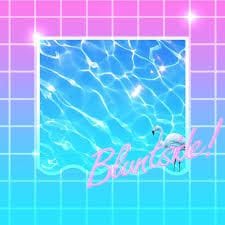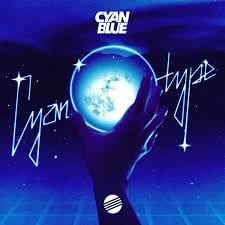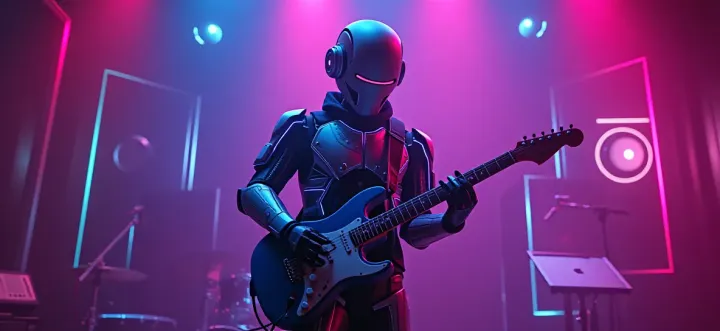Vaporwave: The Subversive Music Genre That Blends Vintage Sounds and Modern Disillusionment
As a devoted fan of retrosynth music, my exploration of nostalgic soundscapes unexpectedly led me to the fascinating world of vaporwave.
What began as a casual encounter with a YouTube video featuring a dreamy, retro-inspired visual backdrop quickly evolved into a deep appreciation for this unique genre. Vaporwave, with its surreal blend of slowed-down samples, lo-fi aesthetics, and cultural critique, seamlessly became a part of my musical repertoire.

Vaporwave is not merely a musical genre but a cultural and artistic movement. Its visual aesthetic—characterized by retro computer graphics, VHS-style distortion, and corporate imagery—has become inseparable from its sound. Albums like Floral Shoppe by Macintosh Plus are iconic examples that have defined the genre.
Artists like Blank Banshee, Saint Pepsi, and George Clanton have further diversified its sound, blending vaporwave with elements of trap, pop, and ambient music.

Discovering Vaporwave through Retrosynth Music

As a fan of retrosynth music, stumbling upon vaporwave felt like uncovering a hidden gem nestled within the same nostalgic realm. While retrosynth focuses on recreating the sounds of the 1980s with modern production techniques, vaporwave takes a more experimental and deconstructive approach. Vaporwave emerged in the early 2010s as an internet-based subgenre, heavily influenced by the same retro aesthetics but with a unique twist. It recontextualizes smooth jazz, corporate muzak, and other 1980s and 1990s sounds into dreamy, surreal compositions. This discovery often happens serendipitously, as vaporwave's visual and sonic aesthetic overlaps with retrosynth, creating an immediate allure for fans of retro-inspired music.
Unlike retrosynth, which often celebrates the past, vaporwave critiques and satirizes consumer culture while simultaneously embracing its kitschy charm.
This duality is what sets vaporwave apart and makes it an intriguing addition to the musical tastes of retrosynth enthusiasts.
Origins: From Internet Niche to Cultural Movement

Vaporwave emerged in the early 2010s as an underground internet phenomenon. Its roots lie in experimental electronic music and plunderphonics, a genre that relies on sampling existing audio to create new compositions. Early vaporwave artists drew heavily from smooth jazz, elevator music, and corporate muzak, often sourced from 1980s and 1990s media.
It's origins can be traced back to platforms like Tumblr, Bandcamp, and SoundCloud, where artists began experimenting with slowed-down, pitch-shifted samples of nostalgic media.
These forums allowed artists to share their work and collaborate, fostering a global community of creators and fans. The genre's ironic and nostalgic aesthetic resonated with a generation disillusioned by consumerism and hyper-digitalization. By providing a space for artists to share their work and connect with a global audience, these platforms' collaborative nature allowed for the rapid dissemination of ideas, leading to the emergence of subgenres like mallsoft and hardvapour. We will explore these in more detail later.
Early Pioneers
The album Floral Shoppe (2011) from Macintosh Plus is often considered the quintessential vaporwave release, featuring slowed-down samples and surreal visuals that encapsulate the genre's ethos.
Another early innovator, Daniel Lopatin, also known as Oneohtrix Point Never, contributed significantly to vaporwave’s conceptual framework. His 2010 release Eccojams Vol. 1 utilized looped and slowed-down pop music samples, creating a hypnotic and unsettling listening experience. While Lopatin's work predates the formalization of vaporwave, it laid the groundwork for the genre’s experimental and nostalgic ethos.
Characteristics and Patterns in Vaporwave Music

Vaporwave's defining characteristics set it apart from other electronic subgenres. These include its heavy reliance on sampling, manipulation of audio, and its distinct visual aesthetic. Below are the key elements that define vaporwave:
Sampling and Manipulation
Vaporwave's foundation lies in its innovative use of sampling. While earlier genres like hip-hop and plunderphonics also employ sampling, vaporwave uniquely deconstructs and reconstructs its source material to evoke nostalgia and critique consumer culture.
Artists often source audio from 1980s and 1990s media, including smooth jazz, corporate muzak, and pop music. These samples are slowed down, pitch-shifted, and layered with effects such as reverb and echo to create a surreal, dreamlike atmosphere.
By slowing down audio and using repetitive loops, the genre creates a sense of temporal disorientation.
This technique not only enhances the nostalgic quality of the music but also critiques the fast-paced, consumer-driven culture of the modern era.
The lo-fi production aesthetic, characterized by intentional degradation of sound quality, further amplifies this effect.
The result: As a listener I am immediately fascinated, hooked and comforted.
Nostalgia
The genre's aesthetic is deeply rooted in nostalgia for the late 20th century. The visuals make heavy use of corporate logos, retro computer graphics, and glitch art.

Dreamlike Atmosphere
The slowed-down and distorted samples create a surreal, dreamlike quality that is central to vaporwave's appeal. This ethereal soundscape transports listeners to an alternate reality, often described as both utopian and dystopian. The genre's ability to evoke such contrasting emotions is a testament to its complexity.
Visual Aesthetics
Vaporwave's visual identity is as important as its music. It incorporates elements like neon colors, Japanese characters, and retro-futuristic imagery. These visuals often accompany album covers and music videos, creating a cohesive aesthetic that enhances the listening experience.









Vaporwave Album Art
Notable Artists and Albums in Vaporwave

Several artists have played a significant role in shaping vaporwave and pushing its boundaries. Below are some of the most influential figures and their contributions to the genre:
Macintosh Plus (Vektroid)
As mentioned before, Macintosh Plus, an alias of Vektroid, is widely regarded as a pioneer of vaporwave. The album Floral Shoppe (2011) remains one of the most iconic releases in the genre, featuring tracks like "リサフランク420 / 現代のコンピュー" that epitomize vaporwave's sound and aesthetic.
Blank Banshee
The already introduced Blank Banshee is known for combining vaporwave aesthetics with trap music elements, creating a subgenre often referred to as "vapourtrap." Albums like Blank Banshee 0 and MEGA showcase his innovative approach to the genre.
2814

The collaborative project 2814, consisting of t e l e p a t h and HKE, is renowned for its ambient vaporwave creations. Their album Birth of a New Day (2015) is a staple in the genre, offering listeners an ethereal, transportive experience.
George Clanton

George Clanton blends vaporwave with modern pop music, creating a unique sound that appeals to a broader audience. His work bridges the gap between vaporwave and mainstream music, making him a standout artist in the genre.
Subgenres and Evolution of Vaporwave
Over the years, vaporwave has evolved into a diverse and multifaceted genre, giving rise to several subgenres. These include:

Future Funk
Future Funk is a more upbeat and danceable offshoot of vaporwave, characterized by its heavy use of disco and funk samples. Artists like Yung Bae and Macross 82-99 are prominent figures in this subgenre.
Mallsoft
Mallsoft focuses on recreating the ambiance of shopping malls, using samples of muzak and ambient sounds. This subgenre often evokes a sense of nostalgia for the commercial spaces of the past.
Hardvapour
Hardvapour is a more aggressive and industrial take on vaporwave, incorporating elements of techno and noise music. It emerged as a reaction to the perceived oversaturation of traditional vaporwave.
Dreamwave
Dreamwave emphasizes ambient and ethereal soundscapes, often blending vaporwave with elements of ambient music. This subgenre is exemplified by artists like 2814 and Infinity Frequencies.
Consumer Culture and Capitalist Critique
Vaporwave is deeply intertwined with themes of consumerism and capitalism.It's blending critique with celebration. This ironic critique is evident in the use of corporate jingles and slogans, which are transformed into haunting, dystopian soundscapes. The musical genre critiques the excesses of consumer capitalism while simultaneously celebrating its visual and sonic artifacts.

Saint Pepsi explored this theme extensively. His album Hit Vibes repurposes upbeat funk and disco tracks, creating a soundscape that is both nostalgic and ironic. By sampling corporate music and advertisements, Saint Pepsi highlights the artificiality of consumer culture while simultaneously reveling in its aesthetic.
Another notable example is ESPRIT 空想, who combines vaporwave’s nostalgic sound with ambient and lo-fi elements. His work often incorporates samples from corporate training videos and elevator music, further emphasizing the genre’s satirical engagement with consumer capitalism.
Retro-Futuristic Imagery and Digital Art
Vaporwave's visual aesthetic is inseparable from its music. The genre draws heavily from retro-futuristic imagery, including 3D graphics, glitch art, and neon colors.

These visuals often feature elements from outdated technology, such as VHS tapes, CRT monitors, and early internet graphics, evoking a sense of nostalgia for a bygone era. Artists like Blank Banshee and Luxury Elite often pair their music with surreal, pixelated visuals that enhance the listening experience.

Emerging Artists and the Future of Vaporwave
While many of vaporwave’s pioneers remain influential, a new generation of artists is pushing the genre in exciting directions. Death’s Dynamic Shroud, for example, is known for their innovative use of AI-generated music and complex, layered compositions. Their work challenges traditional notions of music production, hinting at the genre’s potential for future growth.

Similarly, artists like Windows 96 and Infinity Frequencies are exploring vaporwave’s ambient and experimental aspects. Their music often features minimalistic soundscapes and subtle distortions, creating a meditative listening experience. These emerging artists demonstrate that vaporwave continues to evolve, remaining relevant in the ever-changing landscape that music is.

My prediction and wish is that vaporwave will remain a significant force in both music and art.
For me, the discovery of vaporwave offers not only a complementary listening experience but also an opportunity to engage with a genre that challenges traditional notions of nostalgia and consumerism, making it a meaningful addition to my musical journey.
For further exploration, platforms like Spotify, Youtube Music, Bandcamp and SoundCloud remain excellent resources for discovering vaporwave’s rich and evolving catalog.



